Work on a semantic core is one of the main tasks of SEO promotion. The visibility of the website in search engines and its traffic depends on the effectiveness of the keyword selection and their distribution.
What is the semantic core of the website
The semantic core is a list of all the keywords that are used in website promotion. The number of such keywords depends on the topic of the website and can have millions on large web portals. The main purpose of collecting the semantic core is to reach the demand and develop a strategy to promote the website to increase its visibility in search engines.
The creation of the semantic core is carried out with the help of various tools. Among the most popular are: Keyword Planner, Google AdWords, Related keywords Serpstat, Key Collector, and others.
The semantic core of the website consists of low-, medium- and high-frequency queries. Frequency is determined by the average number of monthly impressions in search engines. The numerical indicators of the frequency will be different depending on the website topic.
For popular topics like clothes or toys, high-frequency queries reach tens of thousands of impressions a month. In some cases, super-popular keywords may be requested millions of times a month.
If the website is about a non-popular, narrow and specific topic, with a small target audience, then the keywords will be considered as high-frequency queries that the search engine shows 300-500 times a month:
Averagely, the classification for popular topics is the following:
- low-frequency queries – less than a thousand a month;
- mid-frequency – from a thousand to three thousand a month;
- high-frequency – more than three thousand a month.
Using Google Adwords Keyword Planner to create a semantic core
The keyword planner allows you to select queries based on a given topic and specified keywords. Click “Start now” to work with the Planner:
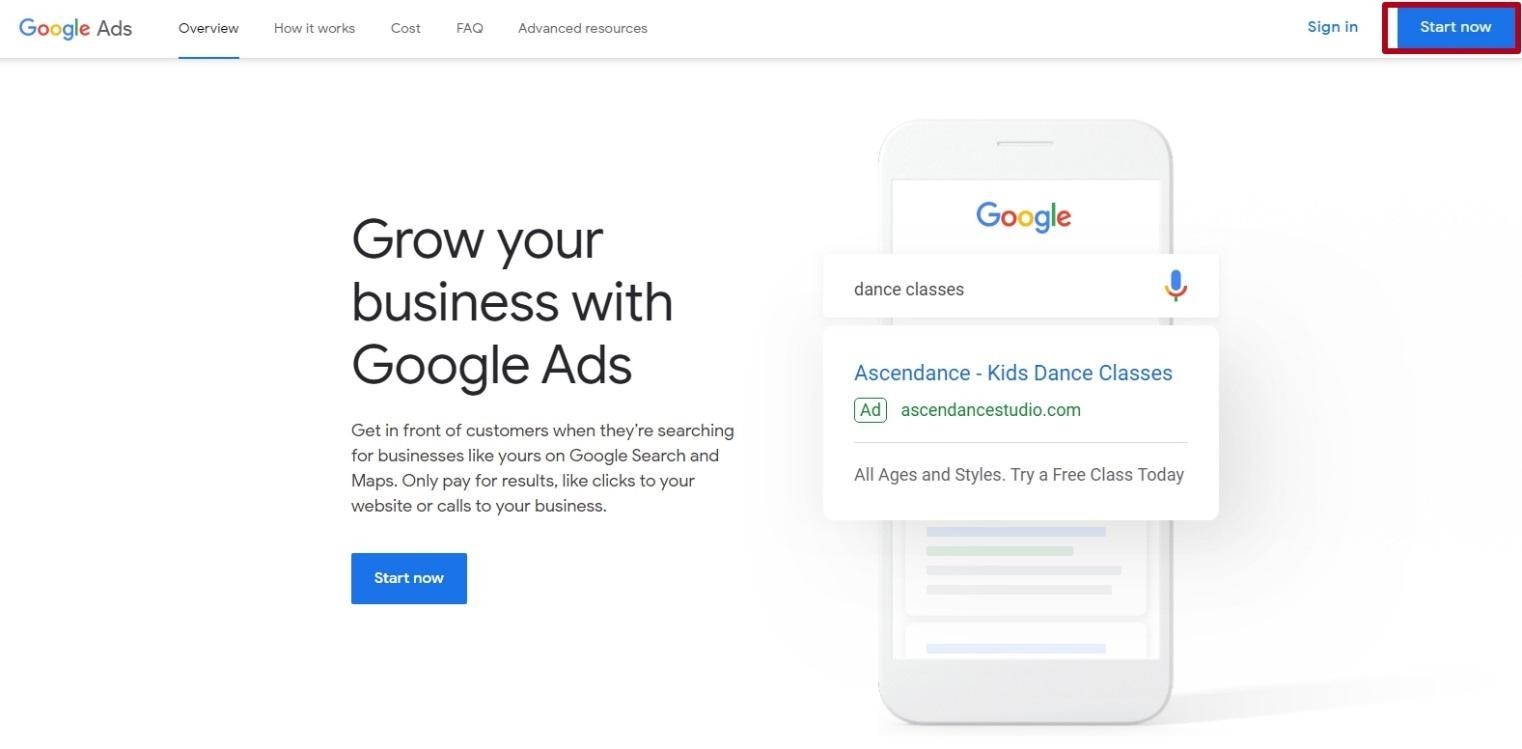
Next, click “Tools & Settings” and choose “Keyword Planner”:

Next, select “Discover new keywords”:
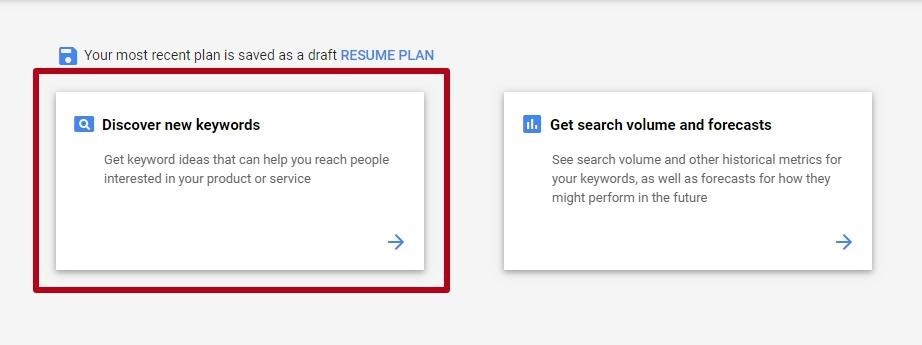
Let’s say, we need to create a semantic core for an online store, which has three categories of goods: motorcycles, scooters and sports bikes.
Let’s enter the listed keywords and click “Get results” to create a semantic core:
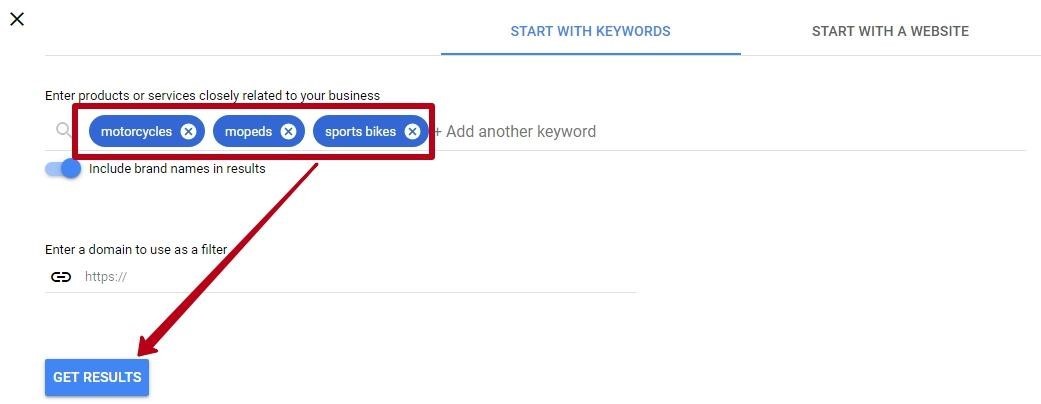
The planner offered more than three thousand queries on the desired subject:
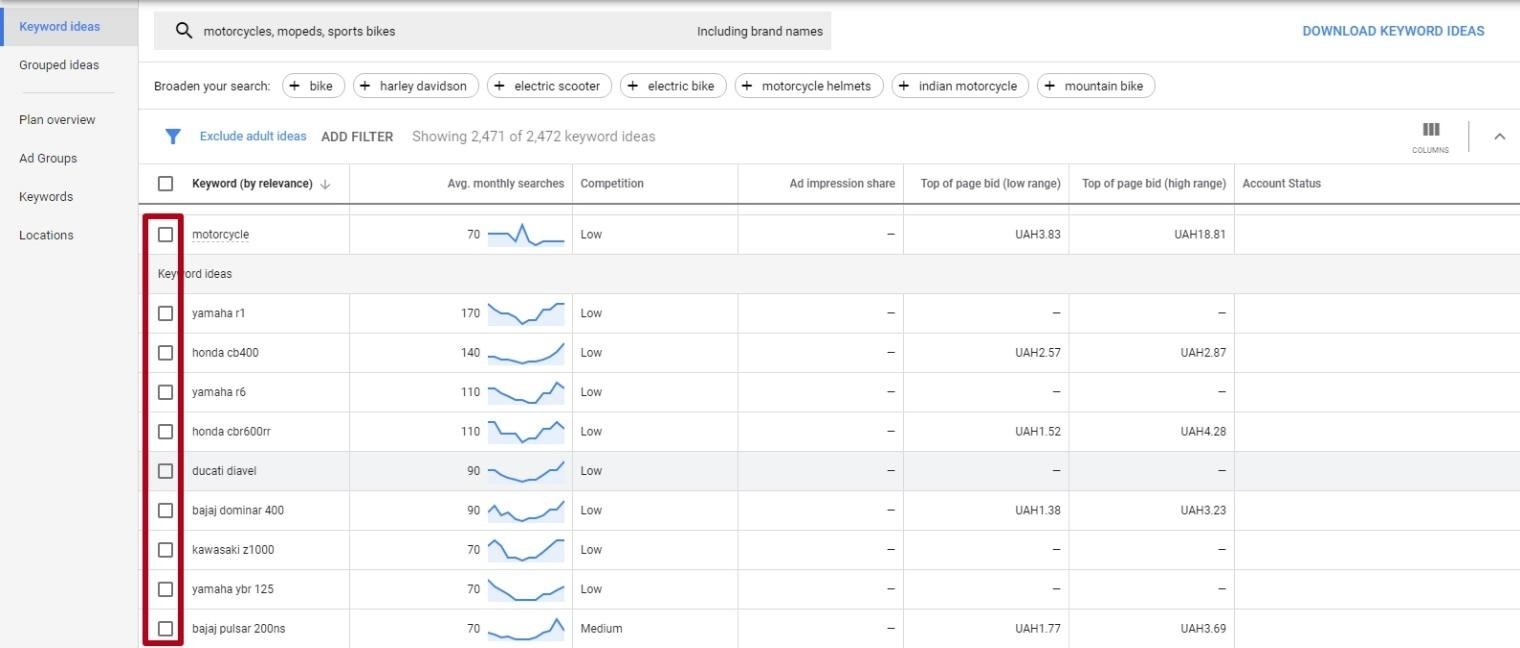
The results can be used to create a semantic core of the website and launch an advertising campaign. The report displays keywords, average monthly searches, competition and the price per clicking on ads when using keywords in an advertising campaign.
You can apply filters, for example, by the level of competition or rate. You can also view groups of keywords united by common topic:
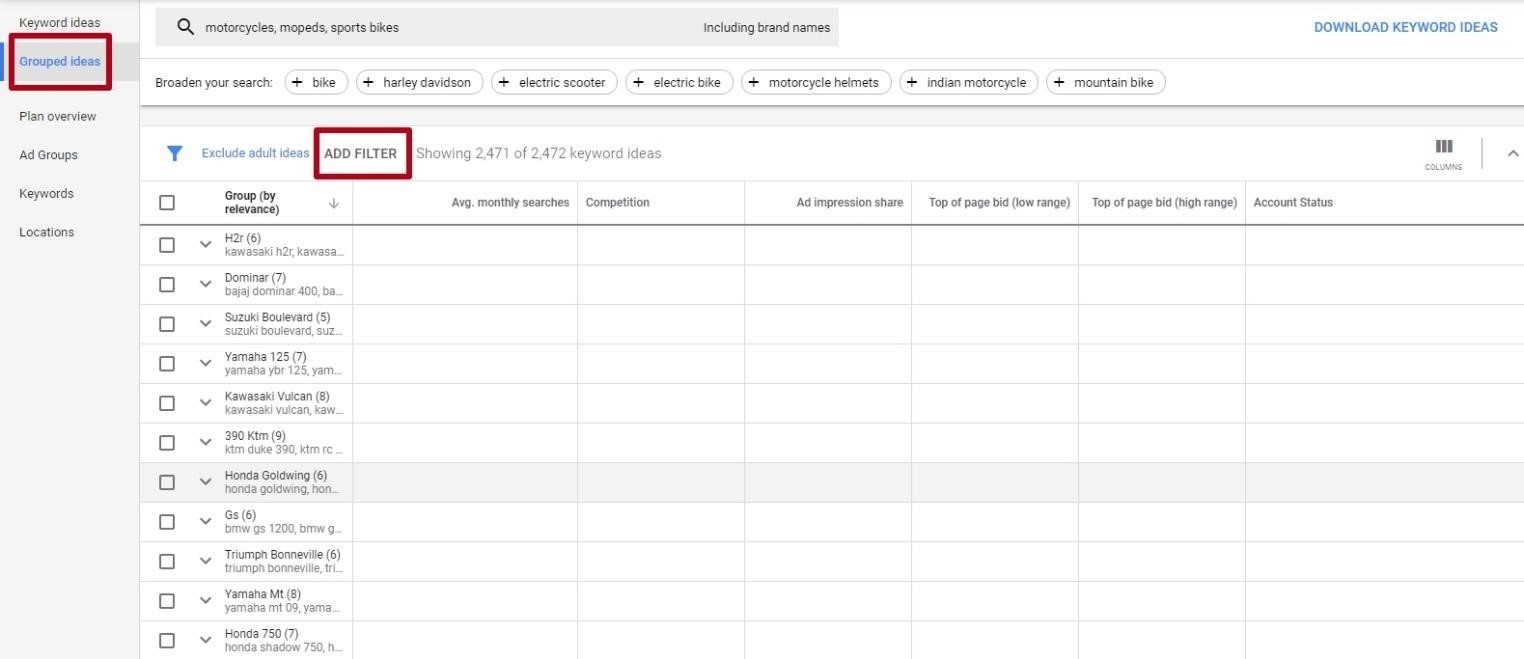
Grouping keywords will allow you to distribute a large semantic core into sections and pages of the website:
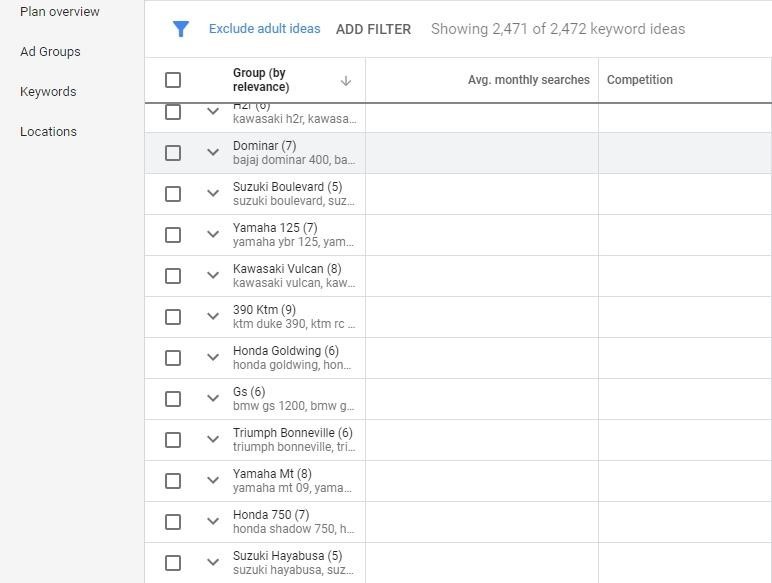
For further work, download the received variants in .csv format:

Expanding the semantic core using Serpstat Related keywords report
This report can be found in Keyword Research section – SEO Research – Related keywords. Enter the desired keyword, click “Search” and get statistics on all similar keywords from the TOP-20:

After receiving new keywords using the module, you should add them to the common file, sort them in alphabetical order and remove duplicates. You then proceed with grouping the queries.
If you need to quickly analyze many keywords, you can save time and use the special Google Sheet developed by the Serpstat team. This document will allow you to quickly upload information from the Serpstat API in a convenient format. A detailed guide on how to use it is available in the blog.Advanced SEO Audit: A Complete Guide To All Stages Of The Analysis [Infographic]
Read more
Distribution of keywords on the website
Grouping keywords of the semantic core
All previously received keywords must be correctly grouped for successful promotion. Keyword analysis helps to determine the website structure correctly: high-frequency and medium-frequency queries should correspond to the names of categories and subcategories, low-frequency ones should be promoted on separate pages.
Proper creation of the semantic core and the distribution of keywords should be carried out under the following guidelines:
1One keyword should not be promoted on several pages at the same time. Otherwise, it will have a cannibalizing effect on the queries.
In this case, search robots either show only one page of the website relevant to a query, or generally lower the position of the resource, showing more optimized resources in higher positions.
2Keywords are added to the text of the page being promoted in various entry forms; moreover, they are also used in meta tags and headings.
For example, you can find such keywords on the page optimized for the query “buy bikes”: “buying bikes in our store is more profitable than in others”, “Bikes that every fan of Harley-Davidson dreams of,” “It’s now become much easier to buy bikes” etc.
3You need to divide the queries into two groups:
- information queries: they have a cognitive value and help to increase website traffic. These queries attract users who are interested in the topic but are not currently focused on making a purchase. Such queries may contain such words as “How”, “Where”, “Why”, “Instructions”, etc.
- commercial queries: they are focused on the target audience ready to make a purchase. The promotion of these keywords provides the highest conversion, as they bring buyers to the website, and not just those who are interested in the topic.
The keywords used in transactional queries are “Buy”, “Order”, “Price”. For example, “Buy a Dnepr bike”, “Ural bike price” and others. These queries are placed depending on the frequency in the website and product categories.
For example, the information queries of the topic of motorcycles will be: “Riding a bike”, “Tuning bikes”, etc. A separate content section should be created on a commercial site for such queries: a blog, news or articles. Such queries cannot be promoted on the product or category pages;
4In the received groups, we search for similar keywords to distribute them on the website pages. For example, such queries may be promoted on one page: “Buy a Yamaha bike”, “Yamaha bike price”, “Buy a Yamaha bike”.5Besides the text on the product pages, categories and articles, keywords are used for internal linking and tagging. Mid-frequency and low-frequency queries that were not used in category names can be used as tags to combine similar groups of products or articles.
Filters are used for a similar purpose, with the help of which you can create landing pages for the “red bikes” queries, “bikes up to 1000 dollars”, and also sort vehicles by categories and other parameters:
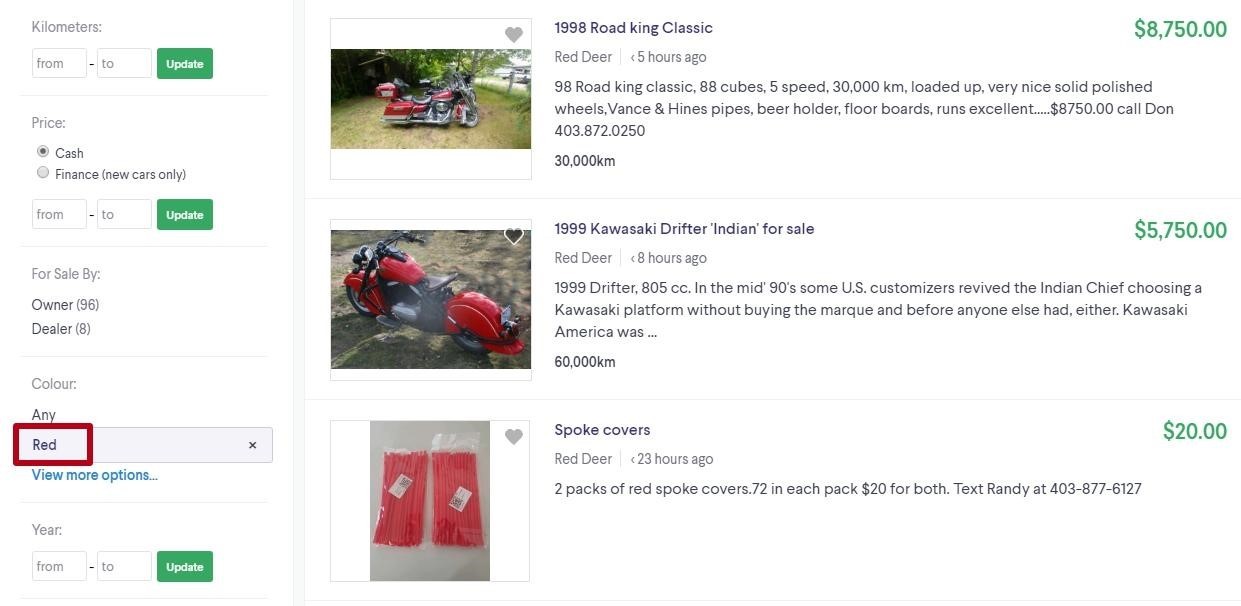
Keyword clustering through Serpstat
Semantic core grouping that has thousands of queries can be time-consuming. You can simplify and automate this process using the Serpstat clustering module, which can be found in Tools:

Select “Create project”. Enter a name, export keywords from a file with a semantic core, then select a region and a search engine:
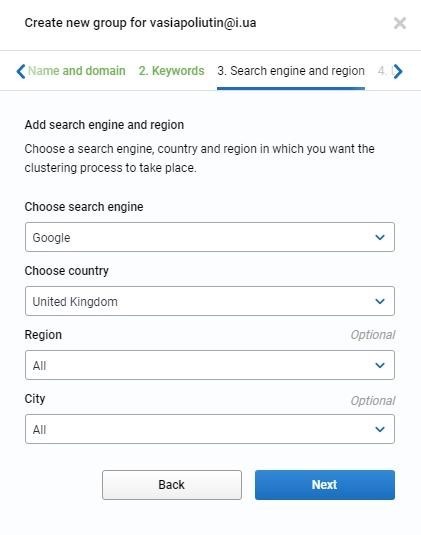
Next, specify the linkage strength and the type of clustering.
Strong linkage strength requires more common URLs in the top 30 search results for a keyword, while Weak requires less.
If you select the Soft parameter, keywords are combined into a cluster, if at least one pair of the clustered keywords has the same URL in the SERP. With Hard-clustering, all keywords in the same cluster should have common URLs in the results.
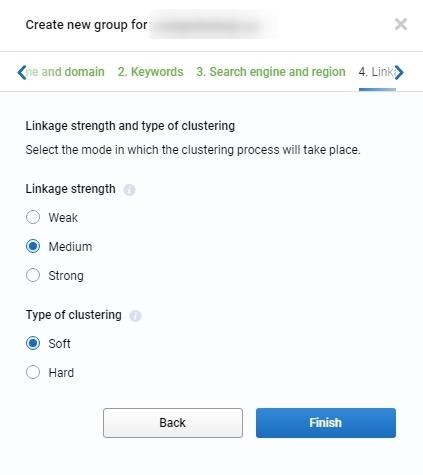
For each received cluster, it displays the Homogenity indicator, i.e. the degree of semantic coherence of keywords between each other. In the report, you can also view the leading websites for cluster queries (“Metatop” tab). The received clusters can be exported into a convenient format.Personal demonstrationOur specialists will contact you and discuss options for further work. These may include a personal demonstration, a trial period, comprehensive training articles, webinar recordings, and custom advice from a Serpstat specialist. It is our goal to make you feel comfortable while using Serpstat.+380Request a demo
Conclusion
- A complete and properly grouped semantic core is the basis of internal content optimization and the foundation for the project promotion. In SEO, the semantic core of the website helps to make the resource respond to queries from the target audience at different stages of the sales funnel and fully provide it with all the necessary information;
- the development of the semantic core starts with the collection of all suitable keywords that will be used for promotion in the future;
- collected keywords must be grouped for further distribution on the pages of the website;
- keywords from the semantic core are used in various forms in category names, website texts, page meta tags, category filters, internal linking and development of landing pages.